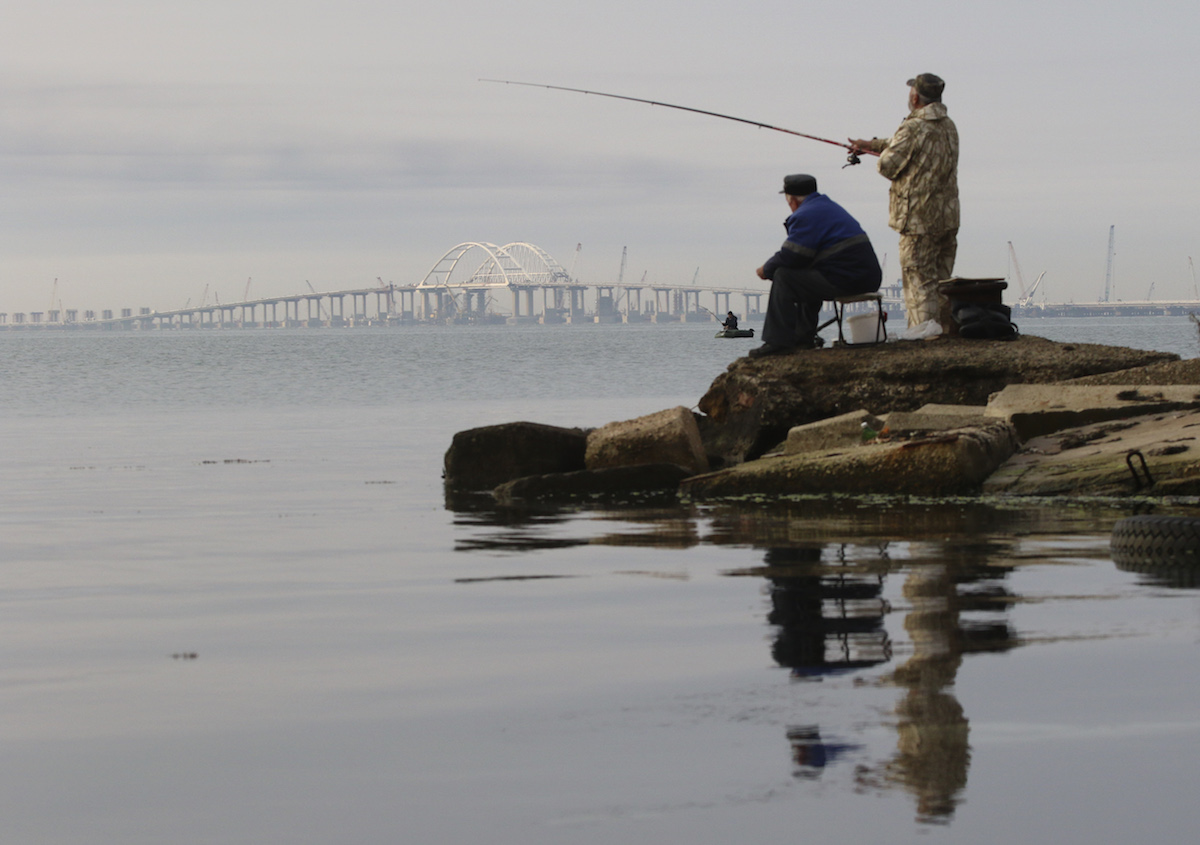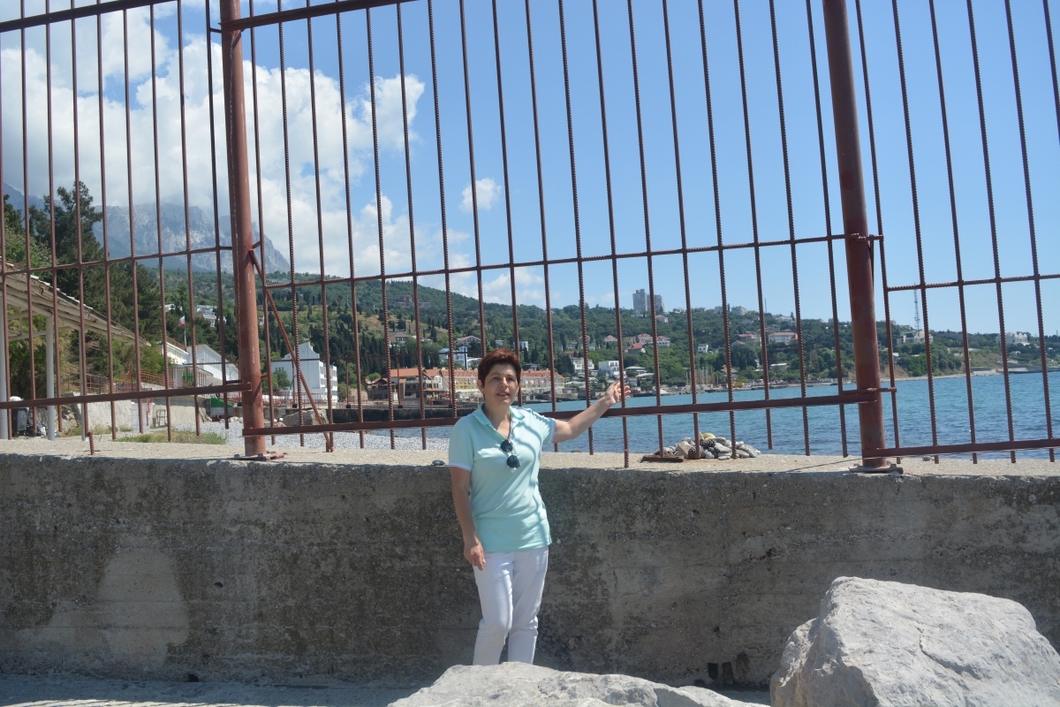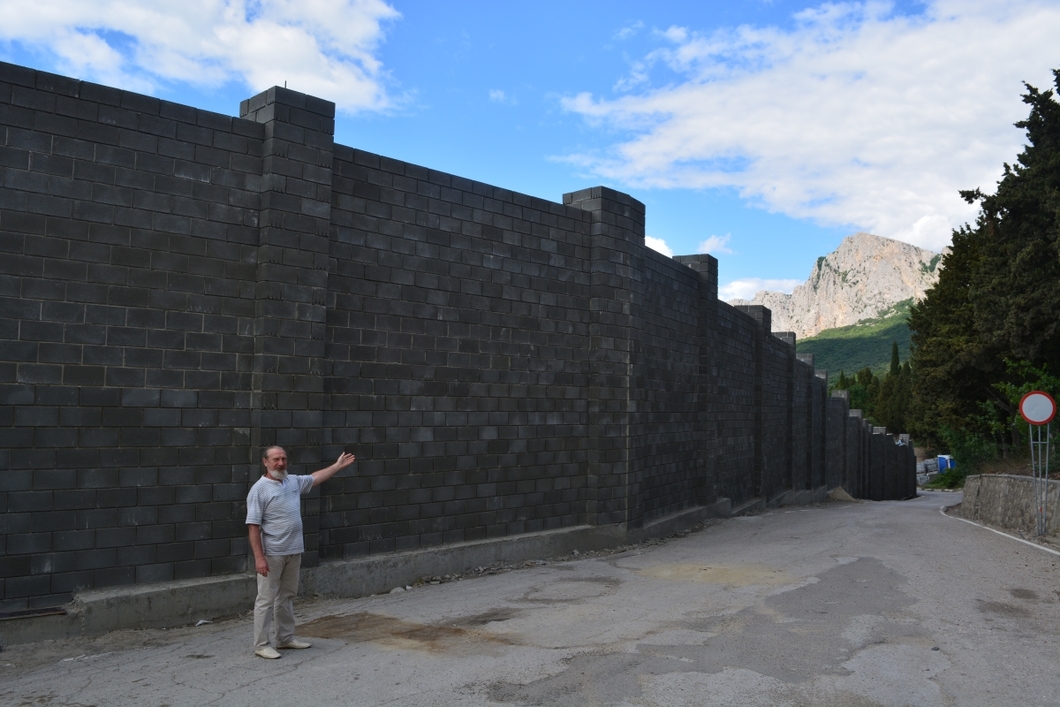Fences at railway stations and closed beach entrances - how Crimea is preparing for tourist season

Based on an article from Novaya Gazeta
The media in the Crimea has written that the tourist season will be particularly successful this year. Local officials are predicting that as many as six million tourists will visit, while official data claimed that 5.2 million people came to vacation on the peninsula last year.
However, the six million tourists will not only swim in the Black Sea, hike in the Crimean mountains and visit famous palaces, they will also be met with an unbelievable number of fences which the local authorities are erecting practically everywhere.
Fifteen fences against terrorism
Fences have been erected in two rows at the bus station in Yalta. The first is located at the station and the second near the platform itself. People who get off the bus or move towards it have to go through a grey gate one by one.
Crimean officials are strictly enforcing the erection of the fences. The director of Evpatoria bus station, Viktor Popov, told a local television channel that:
“The state must stand against terrorism. One such measure is regulating the transit of passengers in highly populated areas. Simply put, this is a regular check before [making use of] the bus.”
Fences have been put up at 15 bus stations in the Crimea in anticipation of the tourist season.
“They took away the beach”
Fences are not only put up at bus stations but on beaches as well. Residents of Simeiz village have been deprived access to the municipal beach.
“They first closed it off in spring of 2015,” says local resident Irina Nechaeva.
The beach was taken over by a local sanatorium. Residents appealed to the authorities, who then provided access to the beach only to close it off again some time later – several times over.

R
esidents of Simeiz have again been deprived of access to the improved beach. A tall gate is installed at the pier and there are enormous stones on the other side.
Aleksandr Talipov has participated in the Clean Shore public movement in Crimea since 2014 and has fought against illegal fences. They are illegal because according to the legislation, all citizens are guaranteed free access to the seaside.
“Earlier, there were so-called closed ‘private beaches’. They were given to the municipalities and there was commercial activity everywhere. But at that time, there were many beach-resorts and sanatoriums which were open to all. Now we’ve been able to get rid of the fences from the so-called ‘private beaches’, but the resort beaches and sanatoriums have been fenced off,” says Aleksandr.
The authorities claim that the fences are anti-terrorism measures, but in actuality, they seem to be anti-tourist.
A seaside village without access to the shore
If you go from Yalta to Sevastopol, you’ll see a tall, four-meter-high brown metal fence which completely covers up the view of the sea.
Residents that live near the fence in Oliva have basically been unable to see the sea for a third year in a row.
“In December 2015 I was going to go fishing,” says local resident Valery Shakh. “A person in camouflage disappointed me when he told me the territory was closed off.”
In the village there were government dachas (holiday homes) since Soviet times which took the front row by the seaside. Locals went to the seaside through the campus of the Tavria sanatorium.
“When Russia came, Tavria was given to the FSB and the special services gave it the status of a military base,” says Oliva resident Boris Sulimov. “This means that outsiders are not allowed in.”

The only way villagers may go to the sea is to go to the neighbouring villages of Foros and Parkovoe. This has been the situation for three years – many go by public transportation or by their own cars. This summer, the local administration has promised to provide village residents with a bus which will take them to the sea four times a day.


















